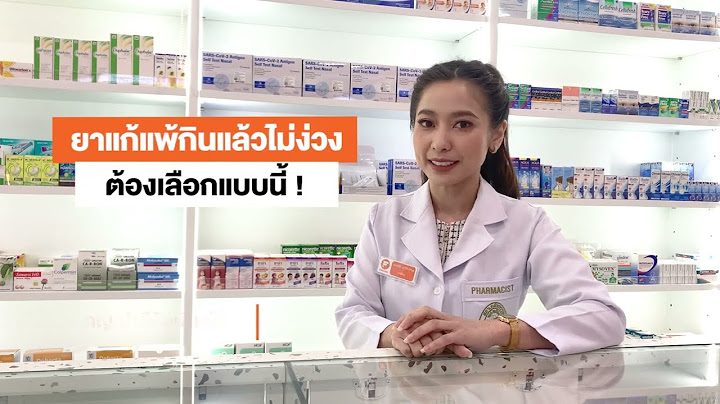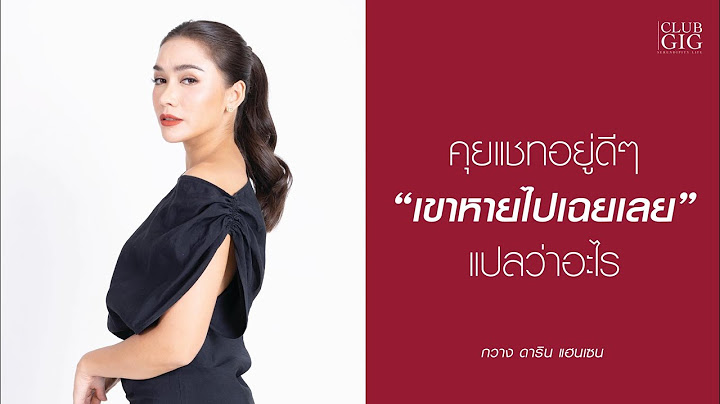สืบค้นเอกสารฉบับเต็ม (Full Text) จากฐานข้อมูลวิทยานิพนธ์ (Thesis Database) ของบัณฑิตวิทยาลัย มหาวิทยาลัยราชภัฏสกลนคร ชื่อวิทยานิพนธ์การพัฒนาบทเรียนคอมพิวเตอร์ช่วยสอน โดยใช้การเรียนรู้แบบ 4MAT ร่วมกับหลักปรัชญาของเศรษฐกิจพอเพียง ที่ส่งผลต่อการคิดวิเคราะห์ความรับผิดชอบ และผลสัมฤทธิ์ทางการเรียน สำหรับนักเรียนชั้นมัธยมศึกษาปีที่ 1Development of Computer Assisted Instruction Using 4MAT Model and the Principles of Sufficiency Economy Affecting Mathayom Suksa 1 Students’ Critical Thoughts, Responsibilities and Learning Achievementsผู้จัดทำณัฐวัตร เขียวดี รหัส 56421231123 ระดับ ป.โท ภาคพิเศษหลักสูตรครุศาสตรมหาบัณฑิต (ค.ม.) สาขาวิชา การวิจัยและพัฒนาการศึกษาปี พ.ศ.2561ที่ปรึกษาผู้ช่วยศาสตราจารย์ ดร.มารศรี กลางประพันธ์, ดร.สมเกียรติ พละจิตต์บทคัดย่อ การวิจัยครั้งนี้มีความมุ่งหมายเพื่อ 1) พัฒนาบทเรียนคอมพิวเตอร์ช่วยสอนโดยใช้การเรียนรู้แบบ 4MAT ร่วมกับหลักปรัชญาของเศรษฐกิจพอเพียง ชั้นมัธยมศึกษาปีที่ 1 ให้มีประสิทธิภาพตามเกณฑ์ 80/80 2) เปรียบเทียบการคิดวิเคราะห์ 3) เปรียบเทียบความรับผิดชอบของนักเรียน 4) เปรียบเทียบผลสัมฤทธิ์ทางการเรียน และ 5) เปรียบเทียบการคิดวิเคราะห์ ความรับผิดชอบ และผลสัมฤทธิ์ทางการเรียนของนักเรียนที่มีระดับความฉลาดทางอารมณ์ต่างกันหลังเรียนด้วยบทเรียนคอมพิวเตอร์ช่วยสอน โดยใช้การเรียนรู้แบบ 4MAT ร่วมกับหลักปรัชญาของเศรษฐกิจพอเพียงกลุ่มตัวอย่างเป็นนักเรียนชั้นมัธยมศึกษาปีที่ 1 โรงเรียนนาแกสามัคคีวิทยา สำนักงานเขตพื้นที่การศึกษามัธยมศึกษา เขต 22 ปีการศึกษา 2558 จำนวน 35 คน ซึ่งได้มาด้วยวิธีการสุ่มแบบแบ่งกลุ่ม (Cluster Random Sampling) เครื่องมือที่ใช้ในการวิจัยประกอบด้วย 1) บทเรียนคอมพิวเตอร์ช่วยสอน โดยใช้การเรียนรู้แบบ 4MAT ร่วมกับหลักปรัชญาของเศรษฐกิจพอเพียง จำนวน 6 หน่วยการเรียนรู้ 2) แบบทดสอบวัดการคิดวิเคราะห์ 3) แบบทดสอบวัดความรับผิดชอบ 4) แบบทดสอบวัดผลสัมฤทธิ์ทางการเรียน และ 5) แบบวัดความฉลาดทางอารมณ์ ของกรมสุขภาพจิต กระทรวงสาธารณสุข สถิติที่ใช้ในการวิเคราะห์ข้อมูลได้แก่ ร้อยละ ค่าเฉลี่ย ส่วนเบี่ยงเบนมาตรฐาน สถิติทดสอบค่าที (t–test for Dependent Samples) การวิเคราะห์ความแปรปรวนร่วมทางเดียว (One–Way ANOVA) การวิเคราะห์ความแปรปรวนร่วมพหุคูณ (One–Way MANCOVA) และการวิเคราะห์ความแปรปรวนร่วมทางเดียว (One–Way ANCOVA) ผลการวิจัยพบว่า 1. บทเรียนคอมพิวเตอร์ช่วยสอนโดยใช้การเรียนรู้แบบ 4MAT ร่วมกับหลักปรัชญาของเศรษฐกิจพอเพียง ของนักเรียนชั้นมัธยมศึกษาปีที่ 1 มีประสิทธิภาพตามเกณฑ์ เท่ากับ 81.00/85.14 ซึ่งสูงกว่าเกณฑ์ 80/80 ที่กำหนดไว้ 2. การคิดวิเคราะห์ของนักเรียน ที่เรียนโดยใช้บทเรียนคอมพิวเตอร์ช่วยสอนโดยใช้การเรียนรู้แบบ 4MAT ร่วมกับหลักปรัชญาของเศรษฐกิจพอเพียง หลังเรียนสูงกว่าก่อนเรียนอย่างมีนัยสำคัญทางสถิติที่ระดับ .05 3. ความรับผิดชอบ ของนักเรียนที่เรียนโดยใช้บทเรียนคอมพิวเตอร์ช่วยสอนโดยใช้การเรียนรู้แบบ 4MAT ร่วมกับหลักปรัชญาของเศรษฐกิจพอเพียง หลังเรียนสูงกว่าก่อนเรียนอย่างมีนัยสำคัญทางสถิติทีระดับ .05 4. ผลสัมฤทธิ์ทางการเรียน ของนักเรียนที่เรียนโดยใช้บทเรียนคอมพิวเตอร์ช่วยสอนโดยใช้การเรียนรู้แบบ 4MAT ร่วมกับหลักปรัชญาของเศรษฐกิจพอเพียง หลังเรียนสูงกว่าก่อนเรียนอย่างมีนัยสำคัญทางสถิติที่ระดับ .05 5. นักเรียนที่มีความฉลาดทางอารมณ์ต่างกัน หลังเรียนโดยใช้บทเรียนคอมพิวเตอร์ช่วยสอนโดยใช้การเรียนรู้แบบ 4MAT ร่วมกับหลักปรัชญาของเศรษฐกิจพอเพียงมีการคิดวิเคราะห์ ความรับผิดชอบ และผลสัมฤทธิ์ทางการเรียน มีความแตกต่างกัน อย่างมีนัยสำคัญทางสถิติที่ระดับ .05 ดังมีรายละเอียดดังนี้ 5.1 นักเรียนที่มีระดับความฉลาดทางอารมณ์สูง มีการคิดวิเคราะห์ สูงกว่านักเรียนที่มีระดับความฉลาดทางอารมณ์ปานกลาง และต่ำ อย่างมีนัยสำคัญทางสถิติที่ระดับ .05 5.2 นักเรียนที่มีระดับความฉลาดทางอารมณ์สูง มีความรับผิดชอบ สูงกว่านักเรียนที่มีระดับความฉลาดทางอารมณ์ปานกลาง และ ต่ำ อย่างมีนัยสำคัญทางสถิติที่ระดับ .05 5.3 นักเรียนที่มีระดับความฉลาดทางอารมณ์สูง มีผลสัมฤทธิ์ทางการเรียน สูงกว่านักเรียนที่มีระดับความฉลาดทางอารมณ์ปานกลาง และต่ำอย่างมีนัยสำคัญทางสถิติที่ระดับ .05 AbstractThe purposes of this study include the following: 1) to develop the computer assisted instruction using 4MAT Model and the principles of Sufficiency Economy for Mathayom Suksa 1 students to contain the efficiency of 80/80, 2) to compare the students’ critical thoughts, 3) to compare the students’ responsibilities, 4) to compare the students’ learning achievements, and 5) to compare the critical thoughts, responsibilities, and learning achievements of the students whose emotional intelligences differed (high, moderate, and low) after they had learnt through the developed computer assisted instruction using 4MAT Model and the principles of Sufficiency Economy. Obtained through cluster random sampling, the subjects were 35 Mathayom Suksa 1 students who were studying in 2015 academic year at Nakaesamakkhiwittaya School under the jurisdiction of the Secondary Educational Service Area 22. The instruments consisted of 1) the computer assisted instruction using 4MAT Model and the principles of Sufficiency Economy which contained 6 learning units, 2) the test to evaluate the students’ critical thoughts, 3) the test to assess the students’ responsibilities, 4) learning achievement test, and 5) Department of Mental Health, Ministry of Public Health’s emotional intelligence test. The statistics employed for data analysis included percentage, mean, standard deviation, t-test (Dependent Samples), One-way ANOVA, One-way MANCOVA, and One-way ANCOVA. The study revealed these results: 1. The computer assisted instruction using 4MAT Model and the principles of Sufficiency Economy for Mathayom Suksa 1 students contained the efficiency of 81.00/85.14 which was higher than the set criteria of 80/80. 2. After the students had learnt through the computer assisted instruction using 4MAT Model and the principles of Sufficiency Economy, their critical thoughts were significantly higher than those of before at .05 statistical level. 3. After the students had learnt through the computer assisted instruction using 4MAT Model and the principles of Sufficiency Economy, their responsibilities were significantly higher than those of before at .05 statistical level. 4. After the students had learnt through the computer assisted instruction using 4MAT Model and the principles of Sufficiency Economy, their learning achievements were significantly higher than those of before at .05 statistical level. 5. After learning through the computer assisted instruction using 4MAT Model and the principles of Sufficiency Economy, the students whose emotional intelligences differed (high, moderate, and low) significantly had different critical thoughts, responsibilities, and learning achievements at .05 statistical levels. These differences could be elaborated as below: 5.1 The students whose emotional intelligences were high had significantly higher critical thoughts than the ones whose emotional intelligences were moderate and low at .05 statistical levels. 5.2 The students whose emotional intelligences were high had significantly higher responsibilities than the ones whose emotional intelligences were moderate and low at .05 statistical levels. 5.3 The students whose emotional intelligences were high had significantly higher learning achievements than the ones whose emotional intelligences were moderate and low at .05 statistical levels. คำสำคัญบทเรียนคอมพิวเตอร์ช่วยสอน, 4 MAT, หลักปรัชญาของเศรษฐกิจพอเพียง, การคิดวิเคราะห์, ความรับผิดชอบ, ผลสัมฤทธิ์ทางการเรียนKeywordsComputer assisted instruction, 4MAT Model, principles of Sufficiency Economy, critical thought, responsibility, and learning achievementไฟล์วิทยานิพนธ์วันที่นำเข้าข้อมูล8 เมษายน 2562 - 12:13:06View 1341 ครั้ง |

การโฆษณา
ข่าวล่าสุด
การโฆษณา
ผู้มีอำนาจ
การโฆษณา
ถูกกฎหมาย
ช่วย

ลิขสิทธิ์ © 2024 th.apacode Inc.





















